

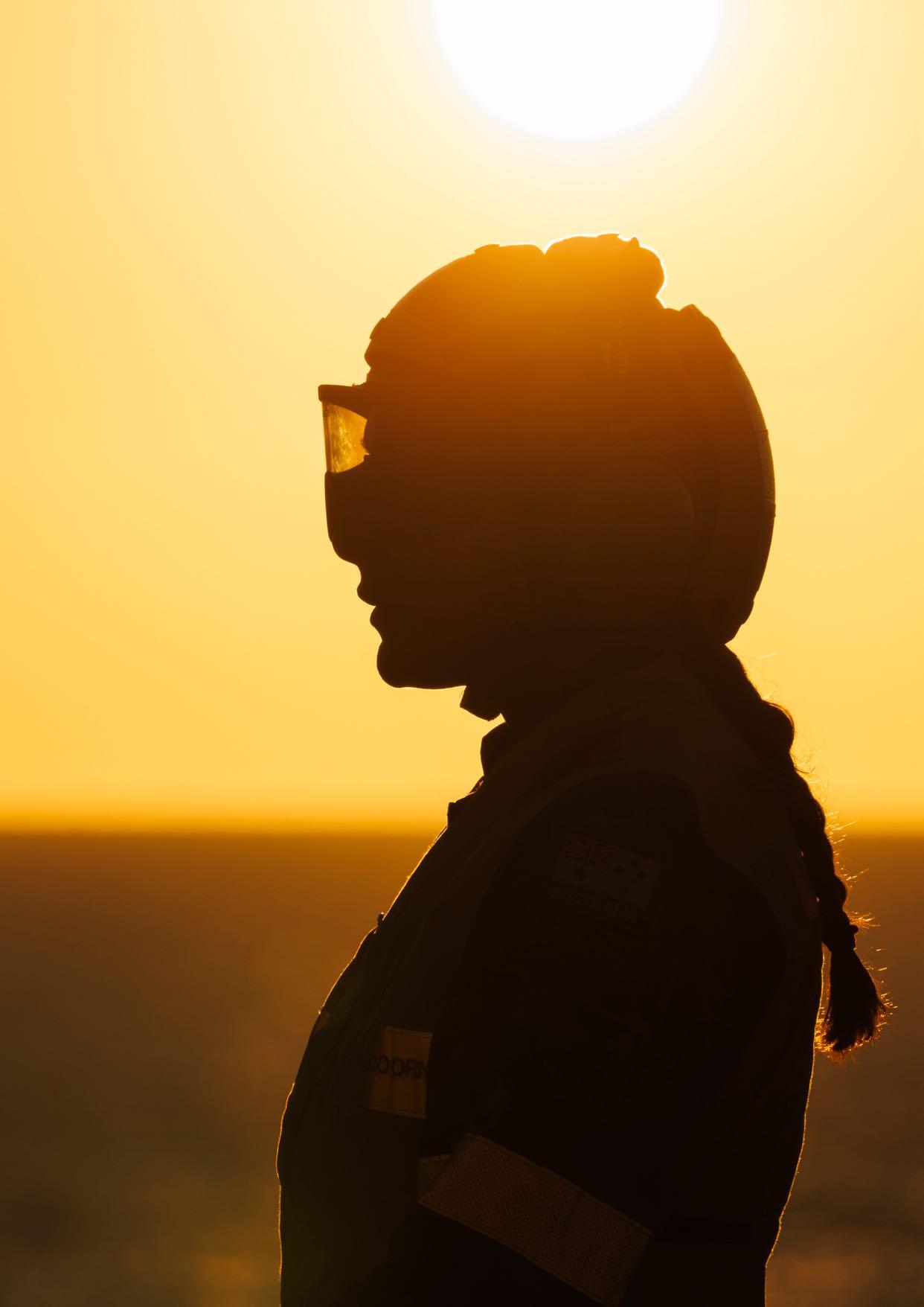
Pardo’s Push
You can’t tow a Phantom, but you can push one!
TheVery First Time
A Pictorial History of Air To Air Refuelling.
Mystery Photo
The Story of the Extraordinary Do-335
Edition 79 - March 2024

Avonmore Books, who were the Publishers of Peter Greenfield and David Prest’s book on the A4 last year, have just sent us another cheque for $708.38 from royalties for book sales in the OctDec 23 quarter. This brings the total amount raised so far to around $3.5K, which will be used to help the FAA museum. Thanks again to the two authors who have made this possible.
I continue to be bemused by Defence’s attitude regarding the tragic crash of the MRH90 in July 2023 - over seven months ago - in which four Army aviators lost their lives. I get that it’s important not to be too hasty in releasing details of the investigation, particularly in early days when speculation is rife: in the first few weeks a steady hand is certainly necessary whilst the system tries to work out what went wrong.
But if there’s one thing surer than Death and Taxes, its that a big bureaucracy like Defence will leak, and in the past couple of weeks there have been disturbing reports in the media suggesting the cause of the accident was ‘faulty software” which allegedly caused pitch/roll ambiguity on the heads up display projected onto the pilots’ helmet visors.
The reports also suggest the issue was a known one, with the Army’s Test and Evaluation Section reportedly finding in 2020 that it was an ‘unacceptable risk to flight safety’ and that it posed ‘a substantial risk of multiple deaths’.
In a recent Senate estimates hearing, a Defence spokesman advised that the 2020 concerns had been worked though, and a ‘number of mitigations

Royal Australian Navy sailor Leading Seaman Keely Hagedoorn guides helicopters on the flight deck of HMAS Adelaide during Exercise Sea Raider 2023. (Defence image).

put in place which allowed [the equipment] to be signed off in 2020 as safe and fit for use.
Reports on the cause of the accident were widely published in the media, including on National TV channels. Detail of the reported mitigation of the alleged software problem was not. The imbalance leaves Defence, rightly or wrongly, looking like a deer caught in the headlights of an approaching car.
And now we hear that the Inspector General (IG) is conducting his own independent investigation into the accident. It’s certainly within his remit to do so but the timing is unusual as, in my experience, the IG would normally wait for the results of theAircraftAccident Investigation Team and the Board of Inquiry reports before conducting a third separate investigation. Perhaps the recent media reports have precipitated it?
It would have been good to see updates from Defence setting out the progress of their investigations and, in particular, just what was done in 2020 to ‘mitigate’ the issue reported by the media. It will all come out in the open eventually - it always does - but honesty and transparency are fundamentals of reputation management, and, from this observer’s perspective, they are sadly lacking thus far.
Stay well,
mp
REST IN PEACE
Since the last edition of FlyBy we have been advised that the following have Crossed the Bar:


Kenchol Barratt, Peter Stevens, Peter Ruhl
You can find further details by clicking on the image of the candle. ✈
THIS MONTH
22

16

REGULARS REGULARS
02 Editorial
A few words and thoughts from the Editor of this magazine.
24
FAA Wall of Service Update
The status of orders for Wall of Service Plaques.
05
Know Your Benefits
Jim Bush’s snippets on what you may be entitled to.
02
Rest In Peace
We remember those who are no longer with us.
34

FEATURES
04
Letters to the Editor
This month’s crop of correspondence from our Readers.
10
Mystery Photo
Last month’s Mystery answered, and a new one presented for your puzzlement (p8).
16
Around The Traps
Bits and Pieces of Odd and Not-so-odd news and gossip.
08
Spinner Spirals
Why do they have twirly things on propeller hubs?
HERITAGE
26
The Very First Time
The story of in-flight refuelling in pictures.
22
Pardo’s Push
You can’t tow an F-4 in flight, but you can push it!

2 3 Editorial Content
THIS MONTH’S COVER PHOTO

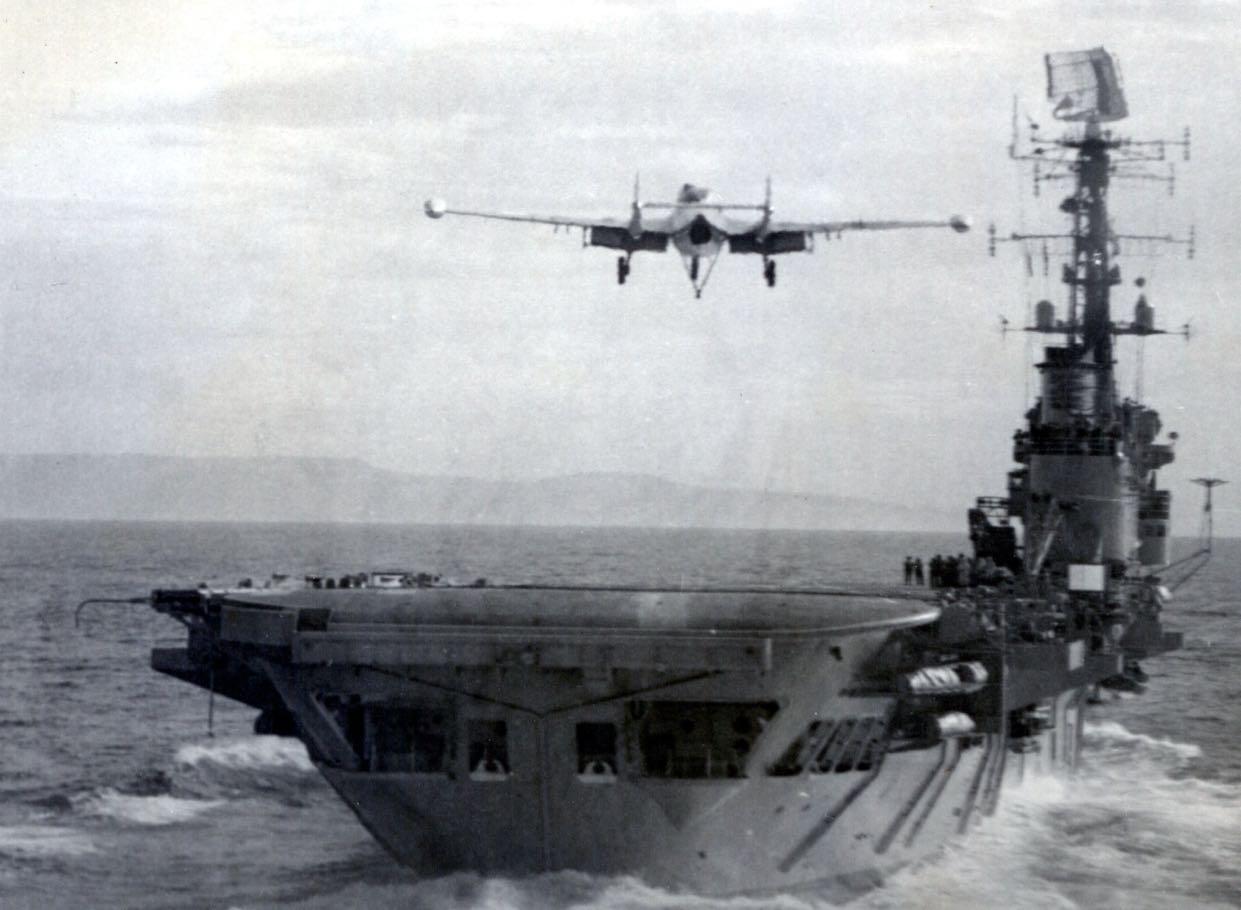
Dear Editor,
The Max Speedy piece in the Feb FlyBy with the Sea Venom photos on page 11 reminded me that Sea Venoms disappearing off the end of HMAS Melbourne’s angle deck wasn’t all that unusual (breathtaking as it was on the odd occasion).
What a lot of people are unaware of is that immediately below the end of the ship’s angle deck was 3 Echo Port sponson which had a Very Flare gun that could be fired remotely by the Bridge in the event of an aircraft being given an emergency ‘wave off’. During flying stations, a duty armourer was stationed at 3EP ready to quickly reload the flare gun should it be fired due to a ‘wave off’ or other reason – this happened only on the rarest of occasions but still required the presence of someone on the sponson.
Nevertheless, it was an interesting place to be especially when the Sea Venoms were doing ‘touch and goes’ as the aircraft would generally drop several feet after flying off the end of the angle deck. Some came remarkably close to the water but seemingly aided by a cushion of air would glide over the wave tops, with the blast from the jet pipe sending a huge plume of spray over whoever was standing on the 3EP sponson. The rate of spray depended upon the sea state, but I recall getting a good drenching on several occasions.
The amazing thing was watching the way the Sea Venoms picked-up speed climbing away ready for another ‘touch and go’. Cheers, Kim Dunstan.✈
Dear Editor,
The Huey featured on the front cover of February’s FlyBy magazine was The RAN Historic Flight Iroquois (now HARS). It was on the 2009 Variety Bash where we took the old girl all the way to Alice Springs.
The photo below was taken on the same trip, this time Silverton just out of Broken Hill.
Cheers, Greg Morris.✈
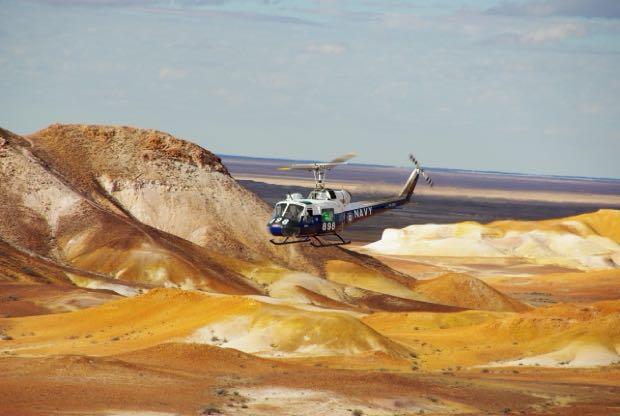
Dear Editor,
I remember the HMAS Albatross dummy deck and the line-up of aircraft very well, having spent many an hour “Hangar Flying” both the Sea Fury and Fireflies that were parked there.
There is also the sad memory of the day that the scrap metal merchant turned up and having paid ₤50 per unit, proceeded to cut the aircraft up and melt down all that was alloy.
Can you just imagine what the value of those wonderful war birds would be today!
I also used the dummy deck as an open air workshop, and can be seen overhauling Kim Dunstan’s car engine in the photo below:

There was also one memorable individual whose name I shall not reveal, who on running out of fuel for his vehicle and desperate to get off the base before liberty men ended, decided to syphon a few gallons from one of the derelict aircraft.
Unfortunately for him, the dummy deck was in full line of vision with the guard house and he was subsequently charged with stealing the Navy’s property and ended serving a fourteen days spell in Jankers.
His nick-name after which became, “Numbers.”
The irony was that just a few months later the scrap merchant moved in and drained all of the fuel away.
C’est la Vie…
Anson E (Ted) Goater.✈
Dear Editor,
I’ve just read the article on the Short Sturgeon in February’s Flyby. Very interesting.

I knew I’d seen the aircraft before and I found an article in Eric Brown’s ‘’Wings of the Weird and Wonderful’ in which he writes about the Sturgeon and his assessment of its deck landing suitability.
He looks at the design as an attempt to produce an aircraft with twin piston engines that could land on a carrier with one engine out. The contra-rotating props allowed smaller diameter propellers that in turn meant the engines could be mounted close to the fuselage and thereby improve asymmetric control at low speeds.
However, while it seems the Sturgeon was a good deck landing aircraft with both engines working, single engine landings on a ship proved “unfeasible because the lateral control became too heavy and spongy to bring the speed down to acceptable limits”.
He notes that the aircraft performance was pedestrian but that it might have succeeded with more development time. But as you point out the proposed solution was obsolete and the Gannet was a better design.
Yours aye, George Sydney.✈
Dear Editor.
With regard to the article on page 16 under the heading “In the past 2”, I reluctantly disagree with the author, because the destroyers in the photo are indeed HM Ships Anzac and Tobruk, but they are not Tribals. They are Battle class.
Our three Tribal class destroyers had all been decommissioned by the time this photo was taken. Arunta in reserve 1956. Bataan for disposal 1957, and Warramunga in reserve 1960.
I served in Anzac through 1960 and 1961 and not once did I observe her towing a target. My part of ship was the Naval Store adjacent to the tiller flat accessed from the quarter deck. At that time The Jimmy was aircrew, Observer category, whose name escapes me. The officer in charge of B turret was also aircrew, Lt. Cdr. David Hilliard. The last I heard of Dave he was a Captain serving. as
4 5 Letters to the Editor Letters to the Editor

Attaché at Jakarta. It was very handy having a Huskisson native on board, who was an officer, for when in JB whenever he went ashore, so did I, to Nowra. We generally returned to anchor in the Bay after a day’s gunnery exercise.
It was my understanding the FAA, when using a ship as target ‘aimed off’ 10º aft, subsequently the target was steaming away from fall of shot which was captured on aircraft’s camera. Conversely, in General Service when using each other as target the ‘aim off’ was 10º forward of the target, so on 28th October 1960 this had disastrous results for Tobruk .
At approximately 1130 on that date in a very heavy swell, which is usual off the South Coast, it was my understanding the radar stabilisers in B turret failed whilst Anzac was firing towards Tobruk; consequently the barrels hunted back and Tobruk was straddled by HE shells fired from Anzac.
Unfortunately a dummy 4.5 inch shell tore a hole approximately 24 ft by 6 ft under the waterline into the Engine Room of Tobruk. With tremendous effort from both ships she was kept afloat, heeled over to get the damage out of the water, and towed into JB by Anzac.
That night a Court of Inquiry was held aboard HMAS Melbourne and plate welded over the hole in the destroyer’s side. Tobruk sailed to Sydney next day, 29 October 1960 and was that day de-commissioned and never re-commissioned.
The only known casualty from the event, an engine room rating, returned to the compartment to shut off steam was scalded. He received a BEM as his reward.
Many will remember that Tobruk was somewhat Illfated during her very short service. Some time during earlier service In the Far East a rating was killed by a bursting star shell from a RN destroyer and later a torpedo was accidentally fired from the after tubes whilst they were still trained fore and aft, passing through a bathroom and galley on the iron deck and coming to rest on a bed in the sickbay.
Hopefully this will bring back memories, and if my memory should prove to be defective, I will stand corrected.
Regards, Fred Dawson.
Thanks Fred, we stand corrected! Battle Class it is.
The Navy website has a fair bit to say about Tobruk (I), including some nice photos. The one shown above confirms that Tobruk was one of two Battle Class destroyers (with HMAS Anzac as the other), and the one below captures a tongue-in-cheek moment when Tobruk returned to Sydney harbour after the incident you describe, where Anzac’s shell struck her during a firing exercise. Red faces all round, I suspect. ✈
Dear Editor,

I contacted you the other day about font size on the magazine being small, and you correctly referred me to a scale slide at the bottom of the screen. There wasn't one on mine and using the highly technical method of fiddling with the PC, I managed to correct it, and my solution may be of use to other members.
My PC is still on Windows 10, which suits me for the limited use I need it for, and a week or so ago, I received some updates which must have increased the picture size making some data on the edge of the screen no longer visible.
If you go into Settings on the PC and find screen size, change the picture back to the next size down and those missing bits reappear and the change is so small I couldn't notice it.
Regards, John Bone.
Thanks, John. Hopefully this tip will be of interest to anyone else who is struggling to read small text.
FlyBy is best read on a device with a larger screen - a Tablet at least, and preferably a desktop with a good size monitor. It can be suffered with a smaller screen if absolutely necessary, and the above solution might help a bit.
Note that this refers to the ‘Flip Page’ edition. Another way to get larger text is to go to the website version (the link is always given to you in the publishing email each month), which will give you a fully scalable page. ✈
Dear Editor
I just spotted the attached photo of a RAN Sycamore on the flight deck of USS Yorktown [circa 1960 I suspect], with a tribal class destroyer in the background which is most likely HMAS Anzac.
The file name says “Sing” which suggests Singapore – the sea surface is typical of the tropics so guess that is right.
Sending in case it is of interest for a ‘FlyBy’ space filler – might be interesting to know who the pilot is. Cheers, Kim Dunstan.
Thanks Kim,
We don’t know who the pilot is, but can certainly identify the aircraft and we know what happened to it. XN448 (Build 13270) was shipped over from the UK in 1958 and was one of the few that survived its service life (no mean feat, as the attrition rate for the Sycamores was over 60%). It was removed from service in 62/63, when the Wessex arrived), and was subsequently sold by Tender in ‘67, and registered as VH-SYC.
In March of ‘68 it was sold again to Associated Helicopter Services in Bankstown and found itself working in WA. It wasn’t for long, as in November the pilot over-pitched in a remote locality, and the rotor blades were damaged when they struck a tree.
Subsequent recovery attempts over several years all failed, including the possibility of lifting the wreck out by RAAF Chinook. As at the last report the decaying wreck is still out in the bush, somewhere south of Wyndham.✈



7 Letters to the Editor

Tenuous Link...
What does the person on the left have to do with the Fleet Air Arm?
Answer next edition!
Airshows Down Under ILLAWARRA
Don’t forget that the first weekend in March (2nd-3rd) is “Wings Over Illawarra” airshow, now known as Airshows Down Under.
There will be two action packed days of spectacle and thrills with a huge variety of static and flying displays. Its the main fundraiser for HARS and is a fantastic opportunity to both see and support their product.



Tickets are best bought beforehand and are available here, together with full details of the event.
MYSTERY PHOTO QUESTION

This unusual looking aircraft never went into action but still had the distinction of most probably savings lives, rather than taking them. What was it? Send your answer here
Spinner Spirals



During WW2 many nations, other than British, painted spirals on the propeller spinners of their aircraft. So what was the reason?
Popular consensus is that it was for safety. On a wartime airfield with people and aircraft all in a hurry, it made it easier to see a rotating prop.
Other explanations are that, on some older engines, it helped identify which way to turn the propeller to prime or start the engine. Reducing bird strikes was also suggested for more modern (jet) engines.
Another suggestion was that it made friendly aircraft easier to identify (a bit like the “Invasion Stripes” painted on allied aircraft in Normandy and, later, in Korea). You can find documents on the web which, although unsubstantiated, ordered that spinners were to be painted with black and white spirals for recognition purposes.
Today, most jet engines have a marking on their hub, to help quickly identify if the blades are turning. The classic spiral tends to appear on Rolls-Royce engines, whilst a ‘G-swirl’ is favoured by General Electric. Pratt & Whitney seem to use a ‘comma’ symbol - but they all do the same thing. ✈
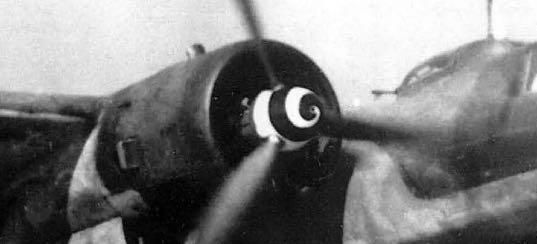


8 9
LAST MONTH’S MYSTERY
Dornier 335 A-12, S/N Werke Nr.230112 parked at Farnborough not long before its fatal accident (RAE).
PHOTO
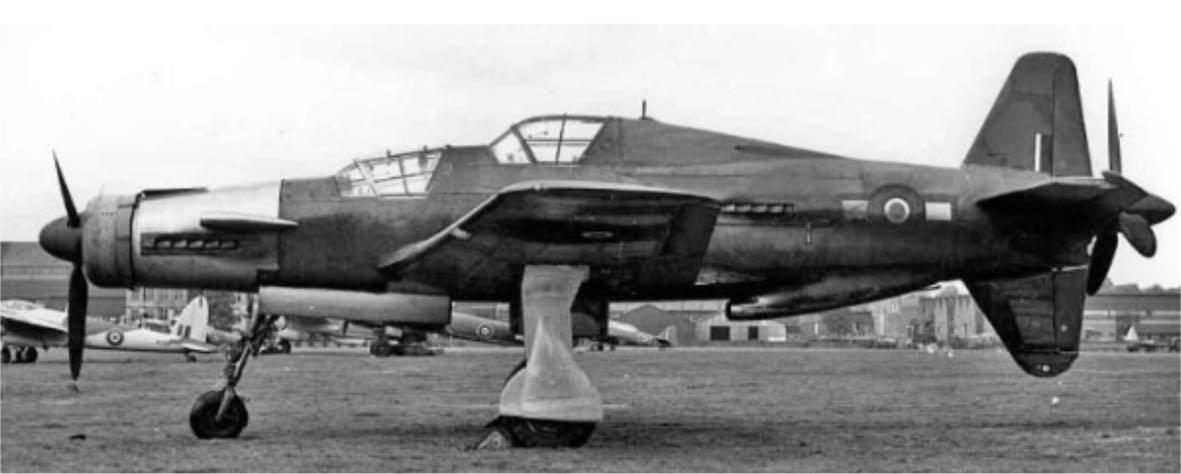
Last month’s Mystery Photo, which several people identified correctly, was the training version of a Dornier 335 ‘Pfiel’ (Arrow). It has both a roundal and the remnants of a US ‘Star and Bar’ painted on its fuselage, signifying its rapid change of hands from German to American and finally British ownership.
The 335 was an interesting aircraft, both in its design and timing.
Claudius Dornier had patented the push-pull engine layout in 1937. It was innovative as it offered many advantages over conventional ‘engines on the wings’ designs: for example, it had less parasitic drag, offered better rates of roll, and more benign single engine handling.
By 1942, with the War going well, the Luftwaffe needed multi-role fighters and in response Dornier built a prototype Do-335 V-1 (V for ‘Versuchs’ or ‘Experimental’. It completed its first flight in September 1943.
Pilots reported exceptional flight performance in acceleration and turning radius and docile handling with no dangerous spin characteristics. The German Aviation Ministry therefore ordered 14 prototypes: 10 pre-production single seaters, 11 production single seaters, and 3 two-seat trainers. Further orders followed, with as many as 48 in service and a further 8 under construction by the time the war ended.
There are reports that three Do-335s were obtained by the British at the end of the war in Germany: an incomplete B series (which was a later version with better armament); an A-1 (single seat production aircraft) and an A-12, pictured in the Mystery Photo. The former didn’t actually make it back to the UK as it had a landing accident in Merville, France in December 1945. Apparently the front crankshaft failed but the pilot secured both engines. He

attempted to land but struck a B-26 Marauder which had belly landed on the airfield. The Do-335 was repaired but was scrapped as interest in jet fighters ramped up.
The A-12, serial Werke Nr. 230112, was taken to Farnborough in the UK but met a sad end when it crashed on only its third flight in allied hands - see sidebar on the next page, and photographs on the following one.

Above. A captured Do-335 being examined. The photo gives some idea of the enormous dimensions of the aircraft, with later versions boasting a gross weight of nearly 26,000 lbs. Despite its size it was regarded as a nimble fighter and capable bomber, fast enough to outrun any allied fighter of the time.
Left. The only surviving Do-335 can be found at the Smithsonian National Air & Space Museum in Chantilly Virginia.
Allied forces found this aircraft near Munich on 39 April 1945 and it was subsequently shipped to the US aboard HMS Reaper (see next page for photo). The Dornier languished in storage in America until 1974. It was then returned to Germany for refurbishment, with much of the work done by men who had built the original aircraft. They were surprised to find the explosive bolts on the rear propeller and tail fin still in place and operational.
The rebuilt aircraft was returned to the Smithsonian in 1986. It is reportedly capable of flight, although not cleared to do so. (Image: Smithsonian).
Below. The single-seat Dornier ‘bagged’ by the RAF in 1945. It was being test flown in France when it suffered a single engine failure, but mishandling by the pilot resulted both engines being shut down, with unfortunate consequences. It flew again, but not for long.✈

10 11 Mystery Photo Answer
12
Mystery Photo Answer Mystery Photo Answer
18 January 1946: The End of Farnborough’s Captured 335
Twenty-five minutes after taking off the Dornier was seen approaching Farnborough with smoke coming from the underside of the fuselage ahead of the rear engine. The plane turned and then descended in a shallow dive, crashing on the village school at Cove. Six persons on the ground were injured and the pilot killed (RAE Farnborough Commanding Officer).
According to a contemporary newspaper report (Aberdeen Press and Journal, January 19th 1946):
"Two minutes before 300 children were due to leave school at Cove, Hampshire, yesterday, a "secret" German fighter plane, with engines at the nose and tail, crashed in front of the schoolhouse, scattering burning debris. The pilot of the plane, Group Captain A. F. Hards, test pilot and commander of the R.A.F. establishment at Farnborough was killed. Four children and a father who was meeting his daughter were slightly injured."
According to a Press Release from the Farnborough Air Sciences Trust (FAST):
"During the Second World War captured German aircraft were brought to the Royal Aircraft Establishment (RAE) for evaluation and with the cessation of hostilities many more were brought over from the airfields and factories. One of these aircraft was a twin seat Dornier 335A-12 which arrived on 8 September 1945 and formed part of an exhibition of captured German aircraft in November 1945 – early 1946. It had been surrendered to the US forces at the Dornier factory at Oberpfaffenhofen, near Munich and flown to Neubiberg airfield and handed over to British Air Intelligence Officers. RAE test pilot Squadron Leader McCarthy flew it to Strasbourg and on to Reims on 7 Sept 1945. The following day it flew to RAF Manston and then RAE Farnborough where it arrived at 16.25 hours. The aircraft was allocated Air Ministry serial AM223 whilst at Farnborough. It next flew on 29 September 1945 when a test flight took place but it would appear that it did not fly again until the fateful day of 18 January 1946.
On that day, the CO of Experimental Flying at the RAE, Group Captain A. F. Hards, was flying the twin engine “push-pull” Dornier 335
that was being evaluated after capture at the end of the war. This was the A-12 two seat trainer version of a very large German fighter which featured a unique configuration with engines at the front and rear fuselage, with propellers at the nose and tail.
The aircraft had departed RAE Farnborough at 11.30am and crashed around mid-day. Legendary test pilot Captain Eric 'Winkle' Brown writes “On my return to Farnborough, The CO, Group Captain A F Hards, asked me to check him out for a solo trip in our two-seat Dornier 335 and on 18 January 1946 he went off solo. As he returned to the airfield, we could see that the rear engine was on fire and we hoped that he would land on the nearest runway. Whether he was unaware of the fire or felt it safer to attempt his first landing in this strange German bird into wind will never be known, but he continued around the circuit as if no emergency existed, heading for the duty runway. He had covered roughly two thirds of the circuit when the Dornier suddenly plunged vertically into a schoolhouse in Cove village. The elevator control cables had obviously burnt through and Group Captain Hards had no chance to eject.”
The aircraft went out of control and dived towards the ground coming down initially in a field at the back of the headmasters' house (Mr John Gilderdale). It then bounced, hit the garage roof, then went into the top of the house and large parts then flew off into the school and across the road. The pilot was found dead in the headmaster’s bedroom. Although the house was destroyed and later demolished, two people downstairs at the time were uninjured. There were some injuries to a few children but none seriously. The aircraft was completely destroyed." (See photos next page).
Crew:

HMS Reaper en-route from Cherbourg to the US with a deck cargo of captured German aircraft including a Dornier 335, Messerschmitt-262s and a Junkers Ju 338.
The Dornier 335’s Ejection Seat
Although Brit Everard Calthrop was credited with first inventing the ejection seat back in 1916, it was the Germans who first used this method of departing from aircraft during WWII. The Heinkel 280 (photo right), a turbo-powered bomber, was outfitted with a seat that would be blown clear of the aircraft using compressed air. The aircraft never went into full production, but the 280’s escape seat managed to save the life of pilot Helmut Schenk who is the first person ever to be saved by this form of egress.
The Dornier 335 was a very fast aircraft and bailing out was made more dangerous by the large tail fin and rear propeller, which
straightforward procedure to use it.


Eric ‘Winkle’ Brown, a test pilot at Farnborough, had a good look at the ejection system which first required the pilot to manually release the canopy. Stories were circulating that when two prototypes came to grief during the development of the aircraft, the bodies of their pilots were found devoid of arms. The story recounted to Winkle by a German pilot was that the canopy jettison required two levers to be pulled, which released catches holding it to the fuselage. Unfortunately, the handles were attached to the canopy so that, when they were activated, the limbs of the unfortunate victims were ripped off.
Winkle didn’t check the veracity of the story but did observe that there were indeed two levers which were attached as described.
Assuming the pilot didn’t lose his arms, the seat was then initiated which blew off the upper fin and aft propeller with explosive charges. The lower fin could also be removed in case a wheels up landing was ever 13

The End of Dornier 230112: The Farnborough Crash 18 Jan 1946.
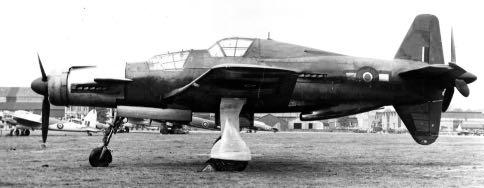
The only photographs of the accident to RAE’s captured Dornier 335 we were able to access were found at the Royal Aircraft Establishment Museum (Farnborough), who were kind enough to make these images available to ‘FlyBy’(thank you Les Ruskell!). They demonstrate both the severity of the impact and how close it was to an even greater tragedy, as although both the Headmaster’s house and the school were damaged, there were only minor injuries to children and parents on the ground. (RAE images).

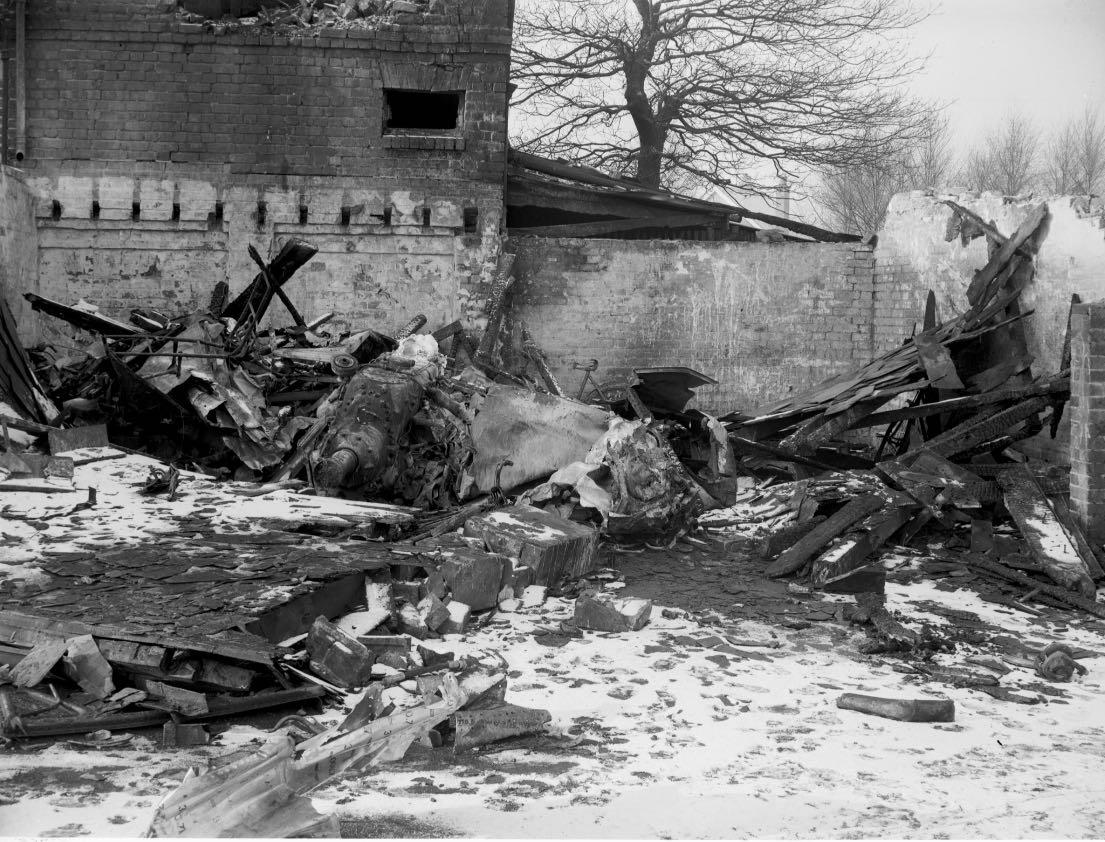

14 15 Mystery Photo Answer Mystery Photo Answer

Around The Traps


We’ve brought you news of emerging eVTOL aircraft from time to time, with Joby leading the pack. That company is now installing infrastructure in New York, ready to start commercial taxi operations next year.
But did you know that from June you can buy a personal eVTOL? It’s an ultralight by developer ‘Pivotal’, which describes its aircraft pretty accurately as it sort of pivots when it takes off. Actually it looks really weird.
Waterfront Apartments?
We all know how big Australia is, but here’s a comparison map which puts things into perspective.
A number of different countries have been jig-sawed into our outline, which shows us to be impressively well endowed!
In more simple terms, we are about 40% larger in land mass than the whole of Europe, which has a population (give or take) of about 800 million compared to our 30 million.
Other comparisons with populous nations are: India - 43% smaller but with about 1.4bn people, and China - 24% larger but they also have 1.4bn.
Old Bar Reunion 2024
John Macartney has advised arrangements for the intended reunion at Old Bar, NSW.
It is scheduled for the weekend of Friday 16 - Monday 19August and will include the usual events such as a reunion dinner, gettogethers over lunch and breakfasts and of course the parade and Vietnam Veterans’ service on the Sunday.
You certainly don’t need to have served in Vietnam to attend: it’s a wonderful opportunity to catch up with mates in a particularly beautiful little town on the mid NSW coast. More details here✈

We ran articles on the German battleship Tirpitz for a few editions, but hadn’t seen this picture of her (right), disguised as a block of apartments during her construction in 1939. The ‘houses’ were made of painted canvas, unlike the foliage (below) used to disguise her as a very large bush when she was moored in Faettenfjord north of Trondheim. Neither rouse worked as she was subject to almost continuous attacks from the Allies.✈
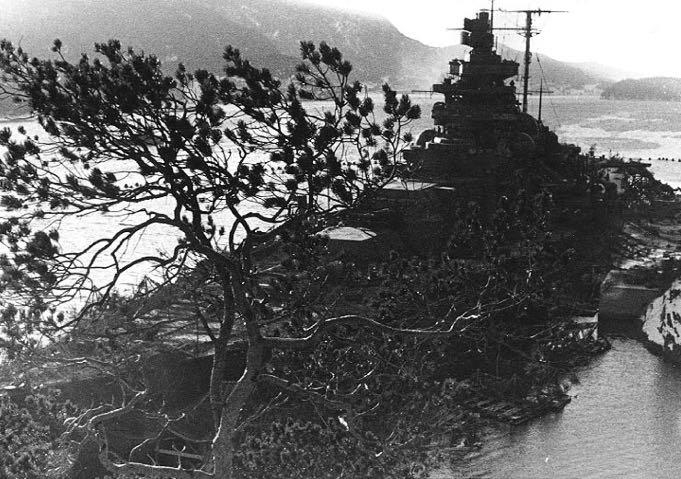
live in the United States.
With an empty weight of just 158kg and a payload limit of 100kg, it has a cruise speed of 55 knots and a range of just 20 miles. It features fly-by-wire controls and is reported as “being easy to fly and safe.” Line up here, please. Cash only!✈

16
Watch Video More Info
News and Views
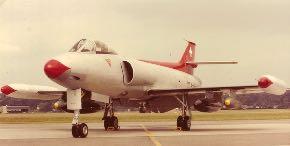
It’s not just military war birds that enthusiasts rebuild. Work has started in the States on the refurbishment of the very first production Learjet 23.
Classic Lear Jet Foundation, a non-profit group acquired serial number 23-003 in August from a private owner, and the non-profit group intends to bring it back to flying status with its team of volunteers. Learjet was one of the first companies to produce a luxury business jet, based on a 1950s Swiss attack fighter aircraft, the FFA P-16 (inset photo). Five prototypes of this aircraft had been built before the project was cancelled.
Bill Lear formed the Swiss American Aircraft Company in Switzerland, but soon moved production to Wichita, Kansas, after finding “...it took too long to get anything done in Switzerland.” The company was renamed the Lear Jet Corporation in 1963.
The first aircraft, 23-001, crashed during a test flight in June of 1964, when it failed to climb on take off. It struck the ground, rolled for several yards and came to rest in flames. Both pilots were seriously injured.

Such an accident can have serious consequences on a small start-up company but investigators quickly found the accident was caused by pilot error. They were simulating a single-engine take off but had the spoilers extended. Work on aircraft continued and the first production model was delivered in October 1964.
In ‘67 the company merged with Gates Aviation and was renamed Gates Learjet Corporation. In 1990 Canadian company Bombardier purchased it, marketing the product as “Bombardier Lear Jet Family”. Production of all aircraft finally ceased in 2021 after more than 60 years and 2000 aircraft.
Bombardier has offered space for the work in building 14, where it used to assemble aircraft. There, a team of volunteers from the Classic Lear Jet Foundation opened the first panel - the pilot’s nose avionics door - where they found a wasps’ nest. They also found oxygen bottles still pressurised even though the aircraft had not been serviced for nearly 25 years.✈
WE’LL BE SORRY TO SEE YOU GO...
Something for nothing is a generous gesture, but it can’t last.
Most FAAAA subscriptions ran out on 31st December 2023, so if you are one of our members who has not yet renewed, the chances are that you’ve had three free editions of this magazine since then.
We’d love to continue to give ‘FlyBy’ to everyone for nothing, but that won’t keep the lights turned on. So, regrettably, we’ll suspend sending FlyBy to members who are still not financial.
The good news is that its really easy to fix this problem by simply renewing your subscription.
The back page of this edition has renewal details, or simply contact the Editor here if you are not sure of your status - and he’ll be happy to help. ✈


18 19 Around the Traps - News and Views Around the Traps - News and Views
✈
The first Lear Jet crashed in 1964
Classic Lear Jet to be Restored
Aussie Company AMSL Sells First Vertiia Airframes

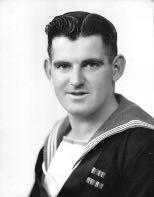
. AMSL founders Siobhan Lyndon and Andrew Moore stand in front of a prototype Vertiia in 2022. Andrew is an ex-RAN Air Engineer. (AMSL images)
From time to time we’ve brought updates on AMSLAero’s “Vertiia” design and its progress in the busy world of emerging eVTOL aircraft.
AMSL, you might remember, is an Australian start-up company founded by husband-wife team Andrew Moore, an ex-RAN FAA Air Engineer, and Siobhan Lyndon, a lawyer and ex-Google executive.
The company took a big step for-

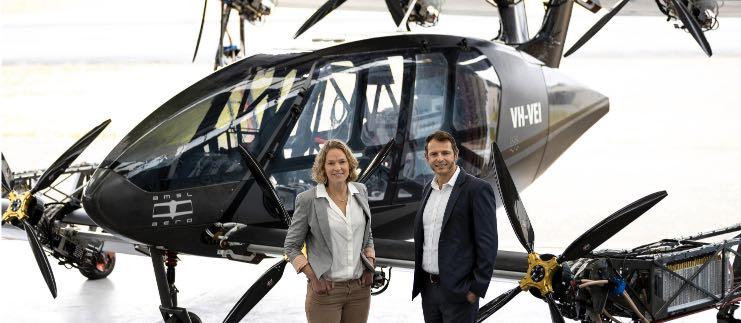
ward recently, when Aussie transport group Aviation Logistics ordered ten ofAMSL’s hydrogen fuel cell powered Vertiias with an option for ten more. The company says it plans to begin operating the aircraft as early as 2027, pending certification from CASA.
Another familiar name connected with AMSL is Chris Smallhorn, ex COMFAA, who was appointed as inaugural chairman to the company towards the end of last year.
At the time of his appointment, Chris said:
“I knew I wanted to be part of this endeavour as I walked into theAMSL Aero hangar in Bankstown. I saw a group of truly brilliant young engineers from diverse backgrounds, all educated and trained in Australia, doing innovative work to create the first Australian-designed certified aircraft in many years. Sitting in the hangar was the advanced prototype of Vertiia, which immediately impressed me with its efficient aerodynamic design, safety and redundancy-based configuration, and practical hybrid power plant design. This is a world beater.”
The global race to get commercially viable eVTOL aircraft to market is cut-throat, with some really big players in the game. It’s great to see a small Aussie start-up making such big strides to be right up there with the best, particularly with such a strong ex-FAA connection. We wish them well. ✈

Occasionally we get a little trove of unexpected photographs, with the latest batch being owned by the late Gordon Howlett (inset in image above). Gordon was one of the original group of volunteers who pioneered the FAA in 1947/48.
Trained as an Aircraft Handler he transferred from the RN. Deserted by his first wife he was left to raise five children, which he accomplished with tremendous will. One son later died in an accident.
Gordon left the RAN in 1964 and died in 1993 after a long illness. One of his two daughters, Bernadette, was kind enough to share his album with the webmaster, from which the above image was extracted. ✈
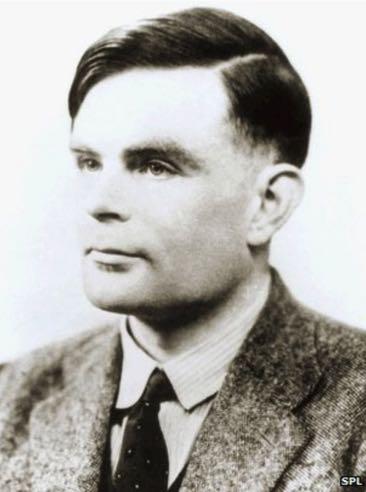


Now we know why it only takes five minutes to train a Greenie...✈
A little historical curiosity.
The father of computing science and artificial intelligence is widely regarded as Alan Turing who headed up the team that cracked the Enigma machine during the war. In 1948 he produced one of the first designs for a stored program computer.
He died from cyanide poisoning in 1954 and an apple with a bite taken from it was allegedly found by his body.
Fast forward 23 years when a relatively young company called Apple changed their logo to what is now the most recognised icon in the world: an apple with a single bite taken from it.
Was it a tribute to Alan Turing? It would be nice to think so, but the truth is rather less romantic. The name “Apple” was chosen by Steve Jobs because he liked the sound of it, and the bite was introduced so viewers wouldn’t mistake it for a cherry.
Shame, really.
20 21 Around the Traps - News and Views Around the Traps - News and Views
Chris Smallhorn
Above. A Vertiia in Air Link livery. Air Link is a subsidiary of Aviation Logistics, which has placed an initial order for ten of the aircraft, with an option for ten more. Right
Ken Dallison. 1967









When Captain Earl Aman’s Phantom was struck by antiaircraft fire over Hanoi, it seemed he and his crewman would be lost. But his wingman, Bob Pardo, had other plans.
On 10 March 1967 the sky above Hanoi was clear, and two Phantom 4-C fighter-bombers of the 8th Tactical Air Wing rolled into their final track to bomb a steel mill just north of the city.
The pair had flown from the Ubon Royal Thai Air Force base, about 750 clicks to the south, and the brief was simple: strike the target and then rendezvous with a KC-135 over Laos to top up their tanks for the return flight. The Phantom was always heavy on fuel.
But the defences were effective, and both aircraft were struck by AA fire. Captain Earl Aman’s Phantom was worst hit, haemorrhaging fuel from a ruptured tank as he turned towards home at 20,000 feet. For a few minutes he was hopeful of reaching the border with Laos, but then his engines flamed out and, with a rate of descent of about 3000 ft/min and friendly airspace still 90 miles ahead, it was clear he wouldn’t make it.
In the second Phantom, Captain Robert Pardo watched the disaster unfolding. With the altimeter unwinding quickly it wouldn’t take long before his two associates would have to eject over enemy territory, and it was well known that downed aircrew were often killed on sight. Even if they survived the initial capture, the future in a North Vietnamese prison camp was grim.
“My father taught me,”Pardo said later, ‘that when your friend needs help, you help. How can you fly off and leave someone you just fought a battle with?”
Ideally, he would have hitched up a tow rope and pulled Aman’s Phantom home, but there was no way to do that. But what if he pushed him?
Pardo explained his plan to his wingman and carefully closed the stricken Phantom until his nose cone was pressing against Aman’s tail chute compartment, but the turbulence generated was too great. He then flew underneath, trying to give the disabled aircraft a piggy-back ride, but was again disrupted by severe vortices. He backed off a little and, after a few moment’s thought, asked Aman to drop his tail hook.
Inching forward, Pardo pressed his windscreen against the end of the hook. It was delicate work, as he needed to provide enough thrust to propel Aman’s Phantom but not so much as to cause the hook to penetrate his aircraft. It was not a stable connection, and Pardo had to reposition his F-4 every 15 to 30 seconds as the hook slid off the perspex - but the rapid rate of descent slowed from 3000 to around 1000 feet per minute.
And then one of Pardo’s engines caught fire, and he had to shut it down. The rate of descent increased to 2000 feet per minute and he attempted to relight his damaged engine to provide extra thrust, but had to shut it down again. Undeterred, he continued pushing for another ten minutes until they were safely in Laotian airspace. It was only then, with both aircraft out of fuel, all four airmen ejected at an altitude of around 6000 feet with less than two minutes left to fly. All evaded capture and were rescued by SAR helicopters.
22 23 Historical Interest

Back at base, Pardo presented his command with a dilemma. Lt Gen. William Momyer, commander of the 7th Air Force in Vietnam, was pressing to court martial him for failing to save his aircraft. Colonel Robin Olds, commander of Pardo’s 8th Tactical Wing, had a different view. He recognised that Pardo’s skill had brought home two fellow aviators, who otherwise would most likely have been killed. He recommended a medal.
Ultimately, the Air Force did nothing, and Pardo continued his career, completing 132 combat missions. He retired in 1974 with the rank of Lieutenant Colonel.
The incident was re-examined 22 years later, and both Pardo and his Weapons Systems Officer were awarded the Silver Star for their heroics on that day. Pardo is reported to have said “I was very surprised. I thought it was ancient history.”
Years latter, Bob Pardo again came to the assistance of Earl Aman. After Vietnam the two men had gone their separate ways, but in the mid 90s Pardo heard that his friend was suffering from Lou Gehrig’s disease and had lost his voice and mobility. He set up a foundation to raise money and, with the proceeds, bought a voice synthesiser, a motorised wheelchair, a computer, and a van. “If one of us gets into trouble, everyone gets together to help,” he said.
Wikipedia.
Art Magazines. The Aviationist.✈
LTCOL Robert Pardo
10 Mar 34 - 05 Dec 23.

Current applications in Order No.53 are as follows:
• R.J. Cluley LS ATA S113325 Jul 72 - Jul 81.
• D.R. Hooper WO ATA S133260 Apr 82 - Apr 06.
• M.A. Sandberg ABATWL S125208 May78-May88.
• E.D. Sandberg LCDR(O) O1024 Apr50-Sep90.
• A. Clark CAF(A) R35828 Mar48-Mar63.
• A. Gillam CPO ATWO/ETW S118699 Jan76-Jan96
• B. Thompson LS ATC S128255 Mar80 - Jan93
• J.W. Lyall WO R65884 Nov66-Nov86
• I. Sausverdis CPO ATWL R62399 Jul63-Jul92
We have to wait for a minimum order size before we can submit to the Foundry, so there may be a further short delay.
✈
Robbie Risner
In a similar manoeuvre in 1952, Captain Robbie Risner had inserted the nose of his F-86 Sabre into the tailpipe of his wingman, Lieutenant Joseph Logan, after Logan’s aircraft was struck in the fuel tanks by enemy fire over Korea.
Despite residual jet fuel and hydraulic fluid spewing out of the damaged aircraft over his canopy, Risner guided them over the sea until fluids threatened to flame-out his own engine. Logan ejected near Cho Do, where the air force maintained a rescue helicopter. As he left his stricken jet, he radioed “I’ll see you at base tonight.” He landed in the sea close to shore but became entangled in his parachute shrouds and was drowned.
Risher’s Sabre ran out of fuel not long afterwards but he was able to glide to a dead-stick landing at Kimpo.
The concept of using one aircraft to propel another was subsequently prohibited by the Air Force.✈
Have you thought about getting your name put on the FAA Wall of Service?
It’s a unique way to preserve the record of your Fleet Air Arm service in perpetuity, by means of a bronze plaque mounted on a custom-built wall just outside the FAA museum. The plaque has your name and brief details on it (see background of photo above).
There are over 1000 names on the Wall to date and, as far as we know, it is a unique facility unmatched anywhere else in the world. It is a really great way to have your service to Australia recorded.
It is easy to apply for a plaque and the cost is reasonable, and far less than the retail price of a similar plaque elsewhere. And, although it is not a Memorial Wall, you can also do it for a loved one to remember both them and their time in the Navy.
Simply click here for all details, and for the application form.✈
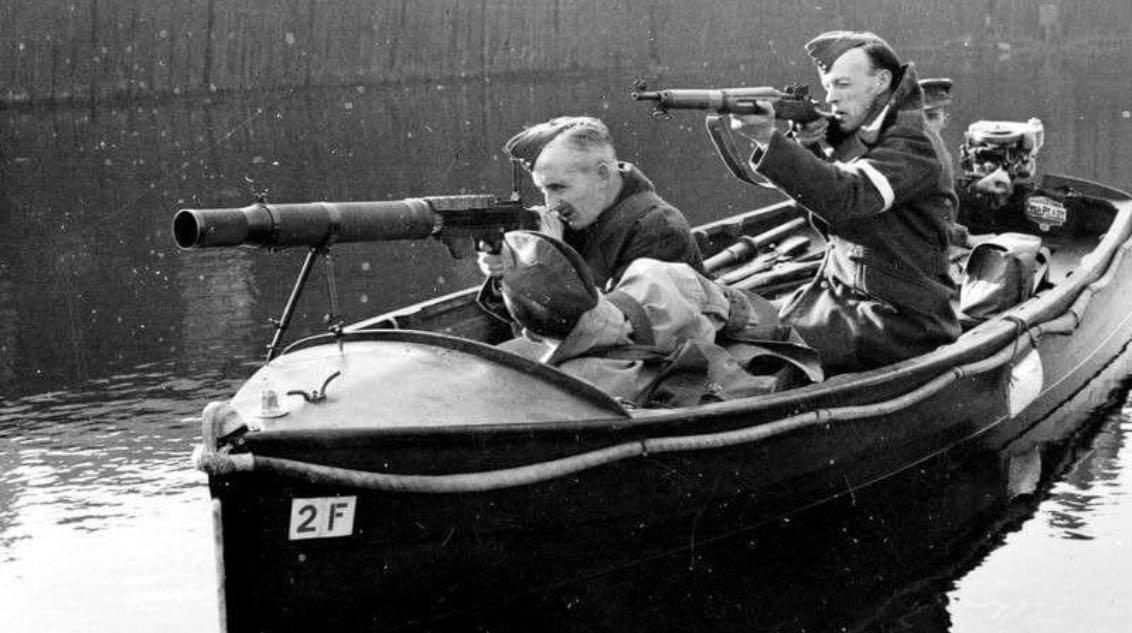
Not often you see a photo of the RAF fighting at sea, but here you go. Anyone want to try their hand at a caption? ✈
24 25 Historical Interest
Bob Pardo during a tour of Seymour Johnson Air Force Bast in North Carolina, in 214. He died on 5 December 2023 aged 89.✈
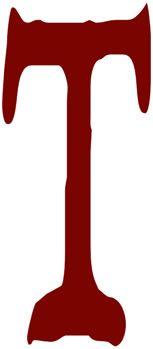

a pictorial history of air-to-air refuelling
 Compiled by Marcus Peake
Compiled by Marcus Peake


The first recorded Air-to-Air (A2A) refuelling, when three barnstorming pilots by the names of Daugherty, May and Hawks conceived a stunt to refuel an aircraft in flight to thrill the crowd. Flying in close formation, May climbed from the wing of one aircraft to another with a five gallon drum of gasoline strapped to his back in lieu of his normal parachute. Severely hampered by its weight, disaster almost struck when he barely managed to flip himself onto the wing of the receiving aircraft. This image was taken by a third aircraft there for photographic purposes.✈
26 27 Feature Article
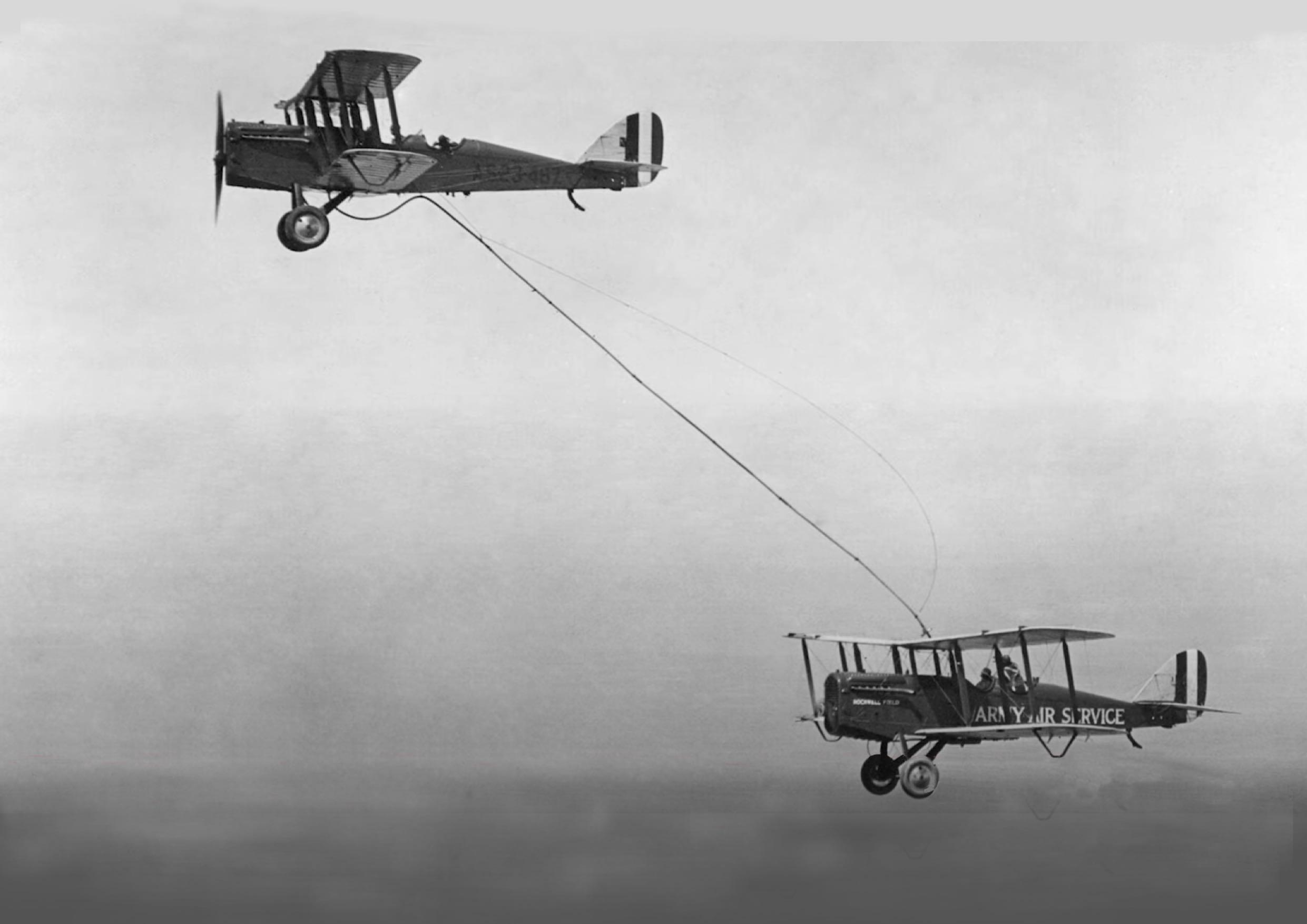
Right [2] The next iteration didn’t occur until October of 1920 when Lieutenant Godfrey Cabot of the US Naval Reserve swooped low over the Potomac River trailing a grappling hook to snag a file gallon drum of gasoline. Although it was a modest amount, the event marked the first more practical means of an aircraft extending its range by aerial refuelling.
Main image [3], and below [4]. Three years later, more tangible progress was made when WW1 veteran pilots Lowell Smith and John Richter turned their minds to the problem. They converted two Airco DH4B biplanes to ‘tanker mode’, with fifty foot extendable hoses that could be lowered to trail behind the aircraft. A receiving aircraft was able to couple onto the hose and, in an early experiment, remained connected for 40 minutes although no fuel was transferred.
But they had proven the concept, and in subsequent tests continuously smashed the endurance record, with one flight of six separate refuellings lasting over 37 hours. ✈

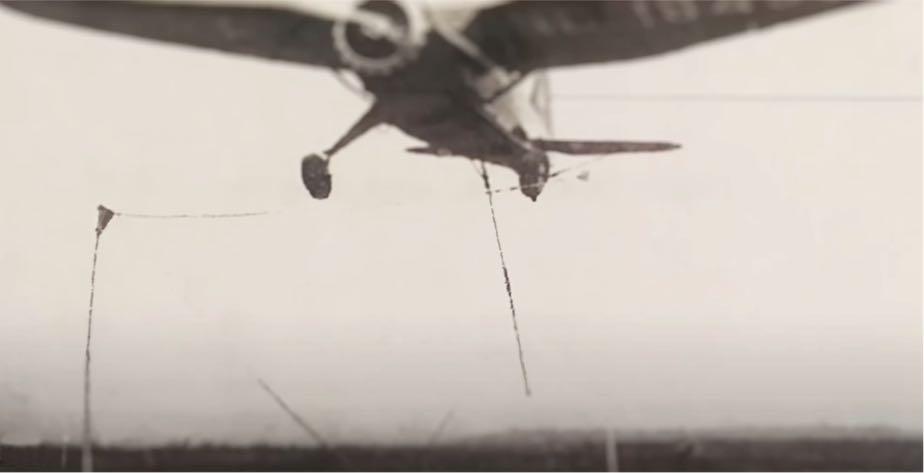

28 29 Feature Article
4
2 3
1920 1923
Above. Lt Godfrey Cabot snagging his drum of gasoline, which was on a raft floating on the Potomac River. He then hauled it aboard to top up his tanks.✈

The dangers of air to air refuelling were graphically illustrated a month later, however, when this aircraft [5] crashed at an air show in Kellyfield (Texas), whilst demonstrating the manoeuvre. The hose had struck the propeller of the receiving aircraft, making it the first fatal air-to-air refuelling accident. Because of this, and the practical difficulties of dangling a trailing hose to connect aircraft together, in flight refuelling was largely regarded as a stunt.
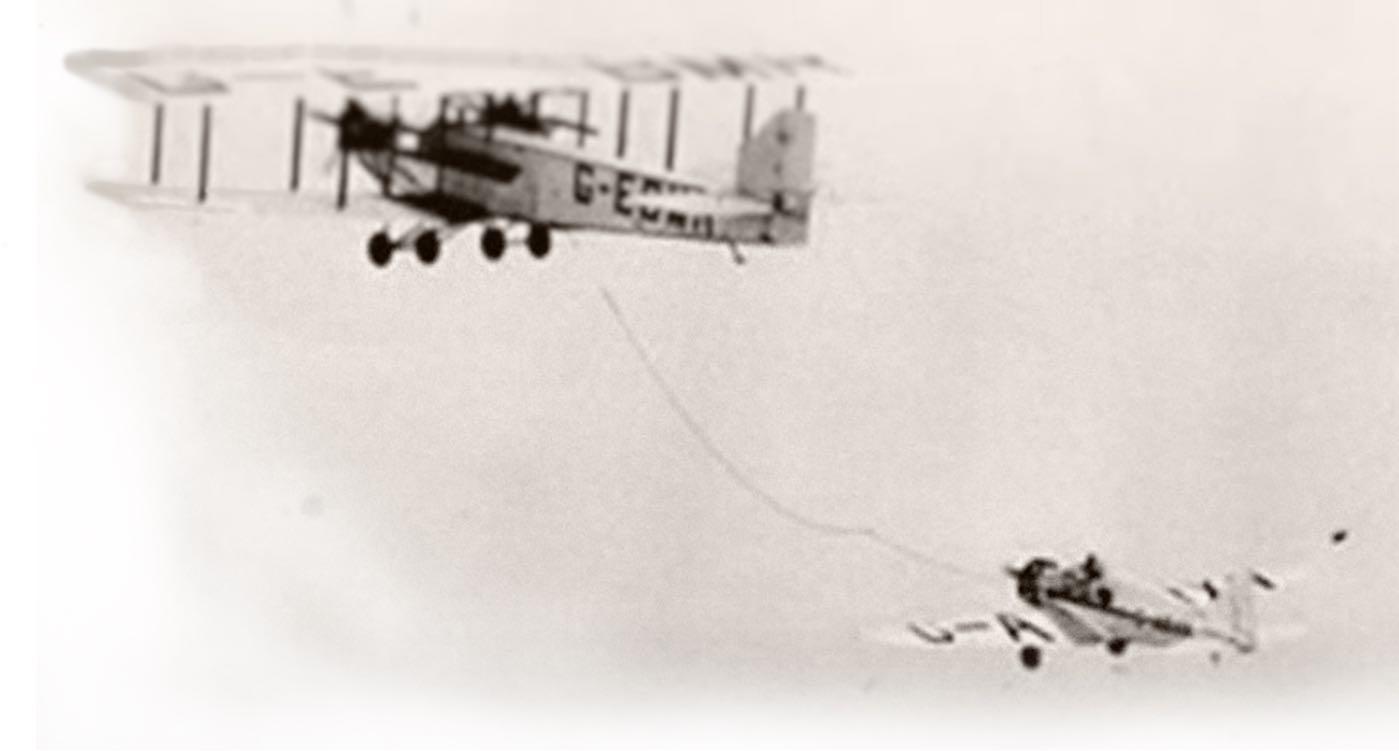
It wasn’t until 1929 that another milestone was achieved, when Captain Ira Eaker and Major Karl Spatz set an endurance record in a Fokker Tri-motor nicknamed ‘The Question Mark’ [6]. Utilising 42 refuels, they achieved almost 151 hours of flight time covering 11,000 miles, which more than doubled the previous record. The flight might have been longer but for an engine failure forcing the Fokker to land. The flight proved conclusively that in-flight refuelling (and re-oiling) could have a practical outcome, but interest remained lukewarm because engine reliability was still seen as a major limitation.✈
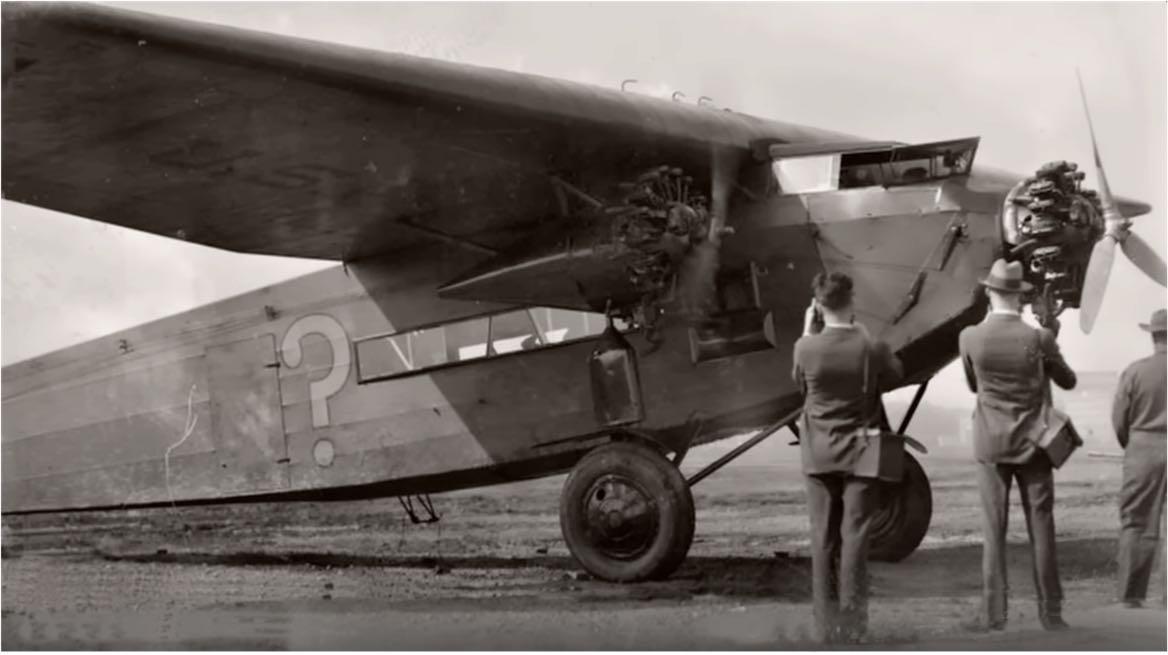
At the same time Sir Alan Cobham [7], a British aviation entrepreneur, was interested in breaking long-distance records and saw in-flight refuelling as the answer.
In 1934 he attempted to fly non-stop to India, but it was unsuccessful. Undeterred, he established Flight Refuelling Ltd., (FRL) in October of that year to promote the refuelling of aircraft in flight, and talked Imperial Airways into trying the system he’d developed.✈
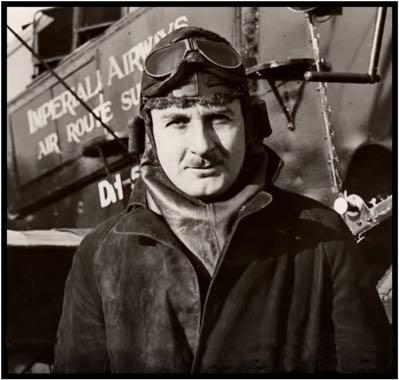
The Question Mark completed 11,000 miles non stop before an engine failure terminated the effort.✈

Imperial
Short Empire Flying Boat to complete the world’s first commercial service employing in-flight refuelling. Four Empires had been converted to the role, but only two were initially used.✈

A total of 16 trans-atlantic crossings were made using the “Looped Hose” or “Ejector” method of coupling.✈
5 8 6 7 1929 1929
Left: A Handley Page Harrow, fittingly registered to reflect the acronym of Sir Alan Cobham’s Company, refuels an
Airways
1939 9 10
WW2 halted further development, apart from a brief period in 1945 when the RAF experimented with four converted Lancaster bombers, known as the “Tiger Force”, in preparation for longrange assaults on Japan. The atomic bomb brought and end to the war and the concept was abandoned.
Photo: Lancaster G-AHJW refuels GAHJU, using the “Looped Hose” refuelling method.✈
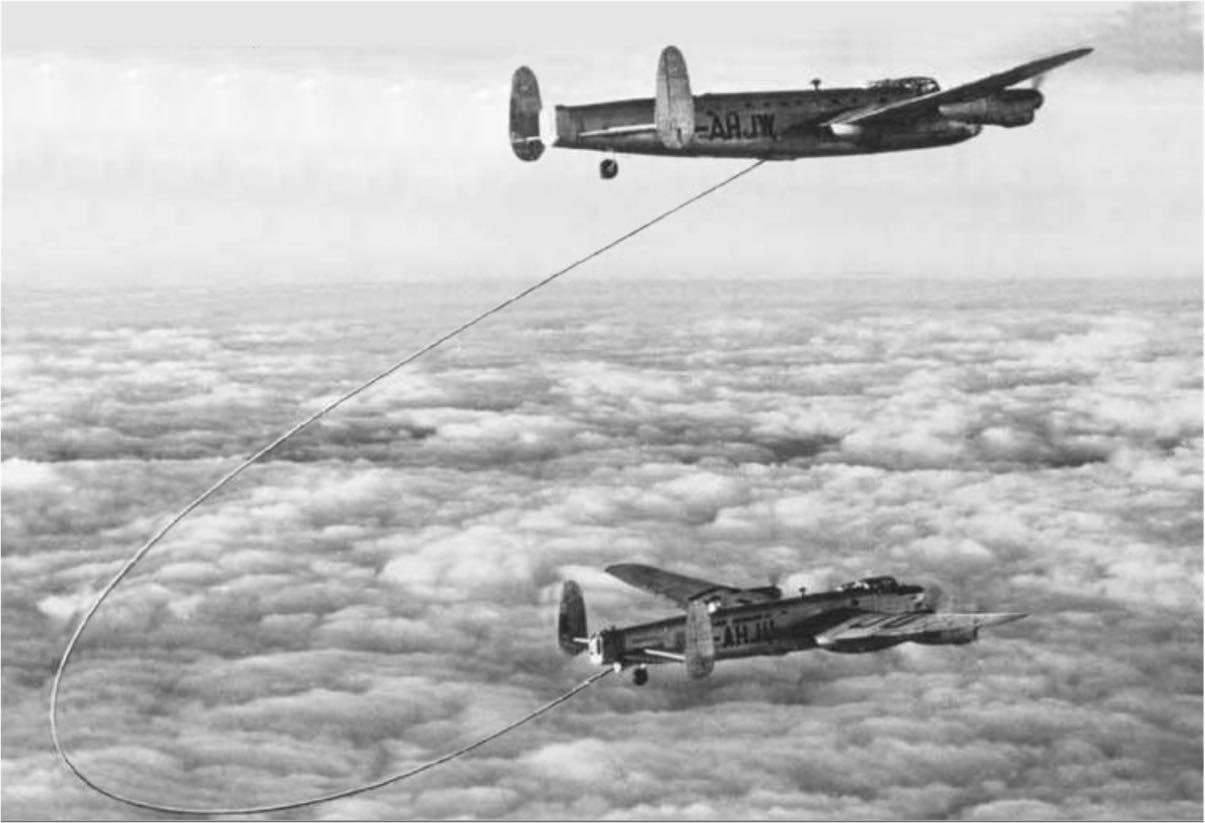
The Looped Hose method, sometimes called “The Ejector” method, required the receiving aircraft to tow its hose which was then seized by the tanker by shooting a projectile with a grappling hook on a contact line. Manipulation of the hoses was largely manual, and a better method was needed. FRL achieved this on 22 April 1949 when a new type of hose drum was fitted to a modified Lancaster, which terminated in a drogue basket. A successful coupling was made with a Meteor with a nose probe, which not only proved the new system to be more efficient, but demonstrated that fighter aircraft could be successfully refuelled. Despite this success, RAF Fighter Command was unwilling to adopt the practice, citing that ‘tankers were large, expensive and vulnerable”. It would not introduce the capability until 1960.✈
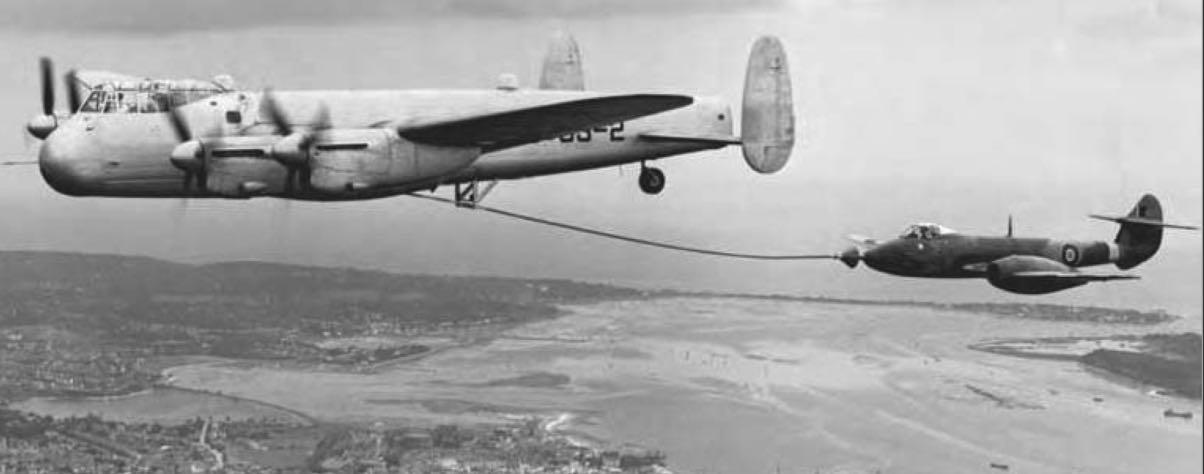

Meanwhile, the developing Cold War accelerated the need for the USAF to adopt in-flight refuelling, and British “Looped Hose” equipment was ordered as an interim measure. The first circumnavigation of the world was made by Superfortress “Lucky Lady II” in 1949 (pictured), which completed the flight unscathed although one the the tankers was lost with all hands.✈
The 1948 USAF’s trial on the Looped Hose method was so successful that orders went out to equip all new B-50s and subseq uent bombers with the equipment. But Boeing had been working on a different system which could deliver fuel at a much higher rate: the Flying Boom. This was a rigid telescopic tube with movable flight control surfaces that a boom operator on the tanker could extend and ‘fly’ to the receptacle on the receiving aircraft. It remains in service with the USAF and some allied countries, but can can only refuel one aircraft at a time and must carry a boom operator. For this reason the Drogue and Probe system also remains in widespread use throughout NATO.✈

1945 1949
11 12 1949 13
14 1950s
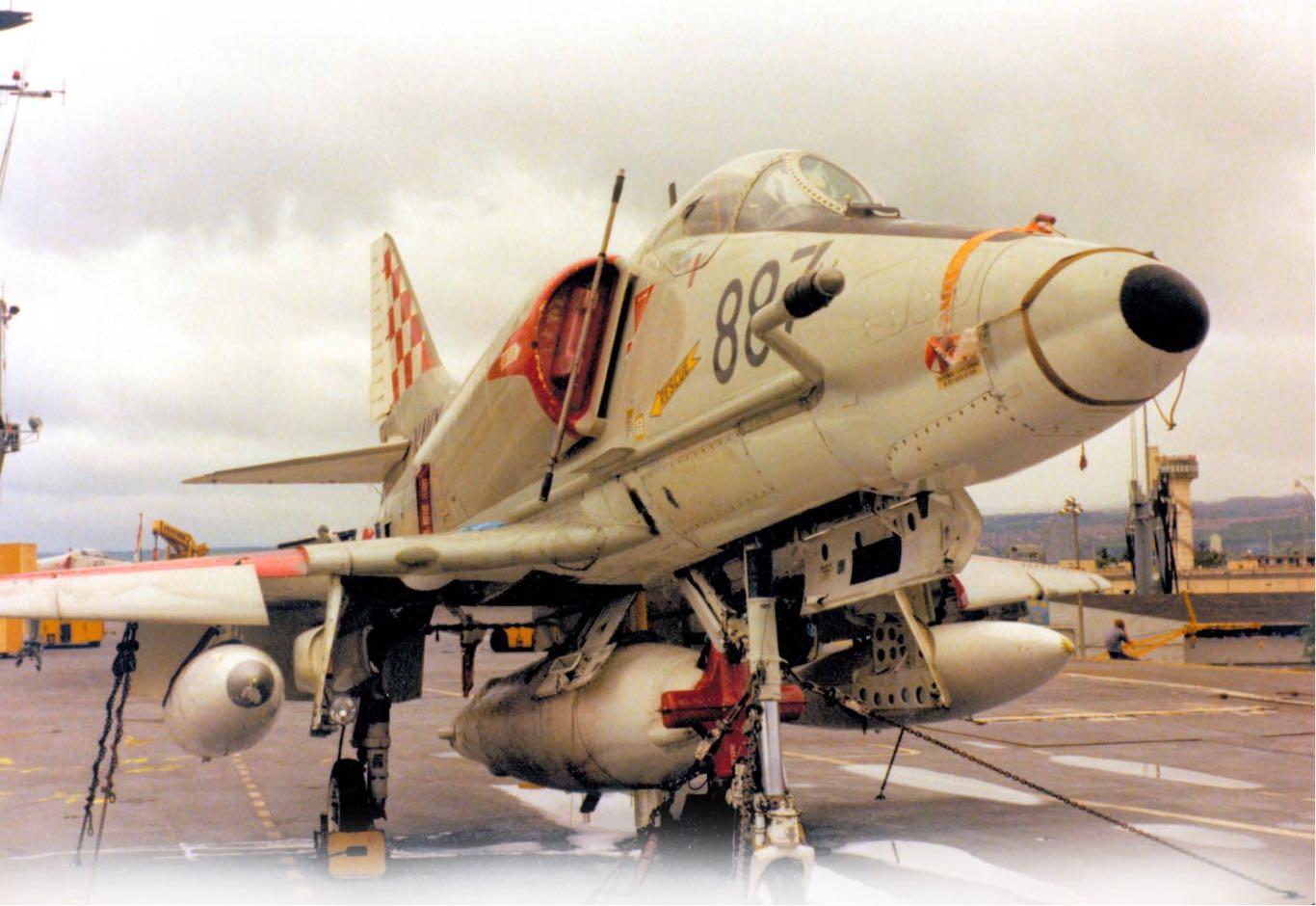
Whilst in-flight refuelling had now reached a mature state, a significant weakness remained: it required a dedicated tanker aircraft that was expensive, vulnerable and, crucially, was completely impracticable for operations with deployed Carrier Air Groups operating far from home base. The ‘Buddy Store’ was the answer: an external pod fitted to an aircraft hard point that contained disposable fuel and a hose and drogue system. The Buddy Store allowed practically any platform to become a supply aircraft: indeed, even the little Skyhawk A4 could quickly be fitted with the store to become ‘buddy refuellers’, thus vastly expanding the range and flexibility of the capability. Above: Skyhawk 887 aboard HMAS Melbourne with the central ‘buddy’ refuelling store and a drop tank under each wing. Note also the ‘bent’ refuelling probe on the nose. These were originally straight, but were modified during the aircrafts’ life to minimise the risk of ingesting fuel into the starboard engine intake.✈
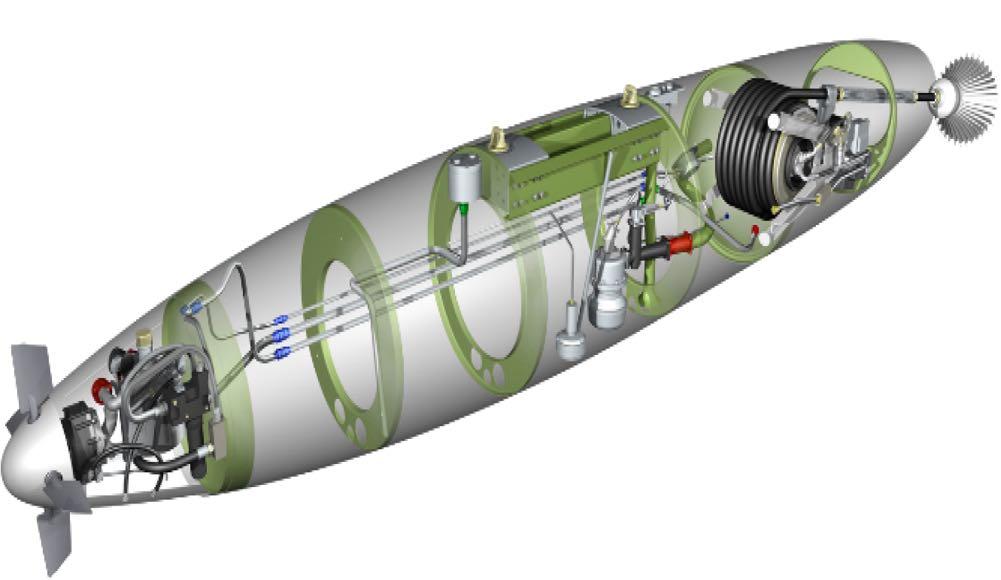
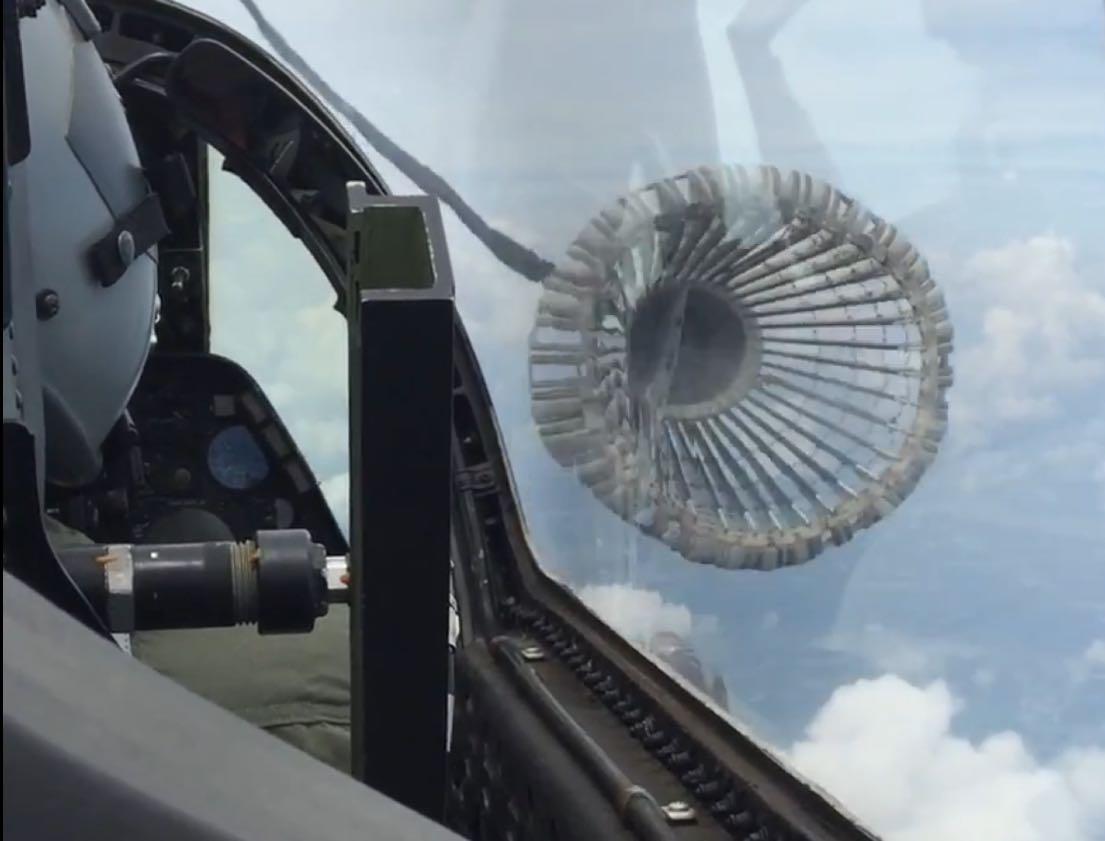
: A TA-4 Skyhawk approaching a NATO style drogue for an in-flight refuel. The tip of the aircraft’s probe, foreshortened by the telephoto lens, can just be seen above the window frame.
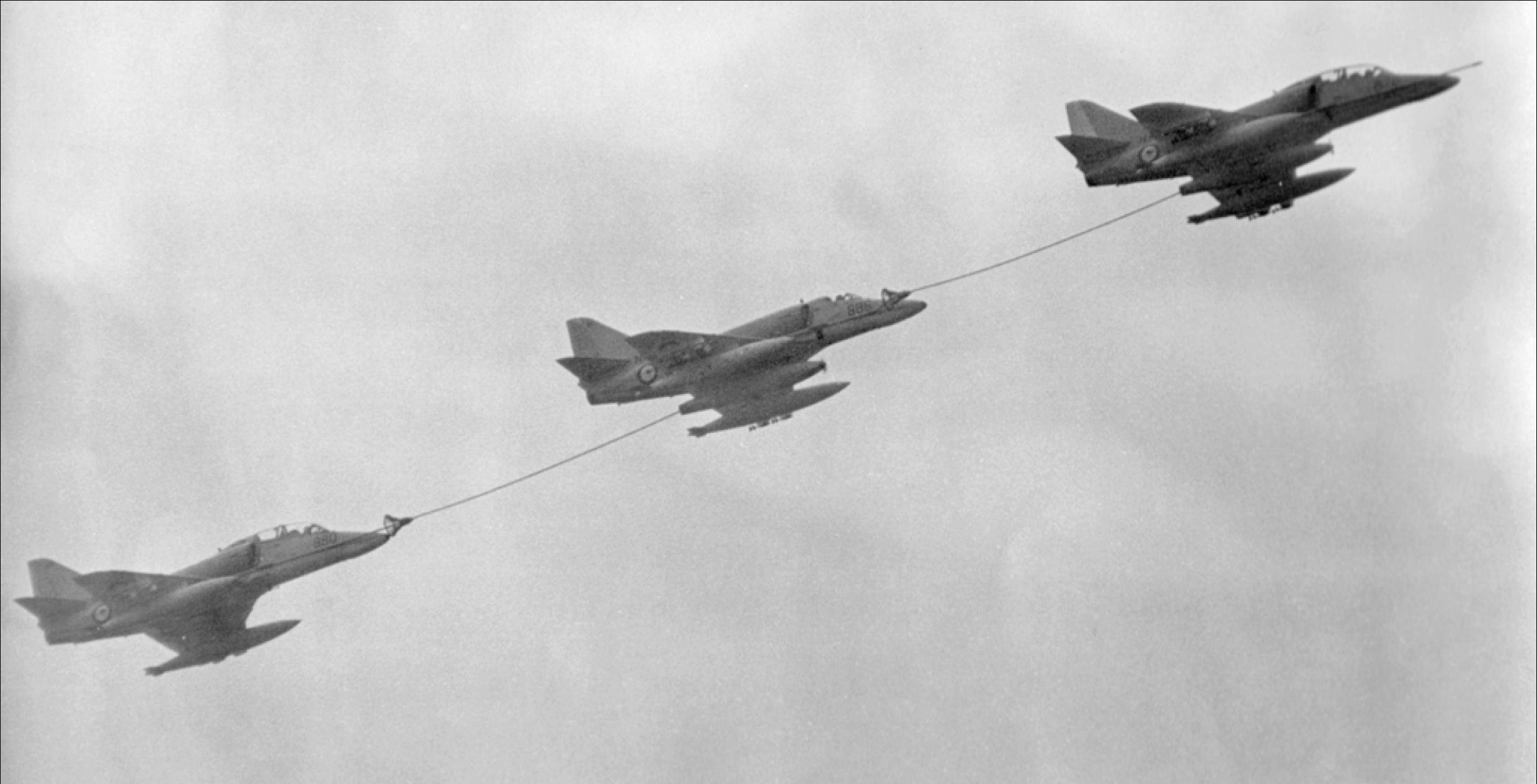
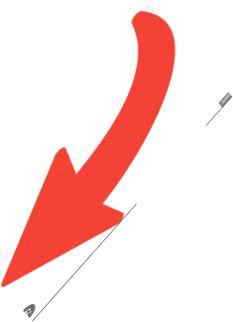

Left: An example of a buddy store refuelling pod manufactured by Cobham Mission Equipment, a British Company derived from Sir Alan Cobham’s Flight Refuelling Limited. It is a self-contained unit mounted on one of the host aircraft’s hard points with normal electrical connection. The nose features a small RAM-air turbine which drives a hydraulic pump when activated, for the hose reel and fuel pump assembly. The hose, capable of delivering around 220 gallons/min, can be trailed to a maximum of 75 feet. The store has an internal capacity of 300 gallons, or just over one minute’s worth, but can take fuel from the host aircraft if it is so configured. Bottom Left: The Cobham store mounted on the MQ-25 UAV. ✈
35 Feature Article
✈
Above. The Buddy refuelling system being demonstrated by RAN Skyhawks, with the leader refuelling No.2 whilst he, in turn, refuels No.3. It’s unlikely this configuration would ever be used in an operational environment, but it shows the flexibility of the system.
1960+
Main picture: An F-15 Eagle of the USAF takes fuel from a KC-135 tanker over the Mojave desert. The ‘wings’ of the boom can be clearly seen, which are aerofoil sections allowing the operator to fly the receptacle onto the receiving aircraft’s probe.
Inset: This was quite different to the “Probe and Drogue” system (previous page) which in the ‘60s would become the de-facto standard in NATO - despite trials showing its utility a decade earlier. Unlike the Boom system, where the operator in the tanker does all the work, the Probe and Drogue requires the pilot of the receiving aircraft to manoeuvre to make the connection.
The aerial boom can transfer fuel at a much faster rate then the drogue system - typically up to three times quicker, which makes it particularly suitable for larger aircraft.✈

The Iron Maiden
The boom system can be modified to trail a drogue but, unlike the wider NATO equipment, it has a metal basket, earning the rather grim nickname of ‘The Iron Maiden’ .
Soft drogues can be contacted slightly off-centre as the probe is guided into the correct alignment by the canvas basket. The metal drogue, when contacted even slightly off-centre, will pivot out of place and may ‘slap’ the receiving aircraft’s fuselage.
The other major difference is that, when a connection is made, the assembly won’t take up any slack if the receiving aircraft advances too far. The resultant ‘bend’ in the hose can cause a loop around the probe or even the nose of the aircraft, causing damage.
Because of these difficulties, staying properly connected to a flying boom basket adapter unit is considerably more difficult than a traditional ‘Probe and Drogue’ setup. ✈

36 37 Feature Article Feature Article
A Boeing KMD-11CF tanker refuels an F-16 via its boom, whilst two others wait for their turn. ✈

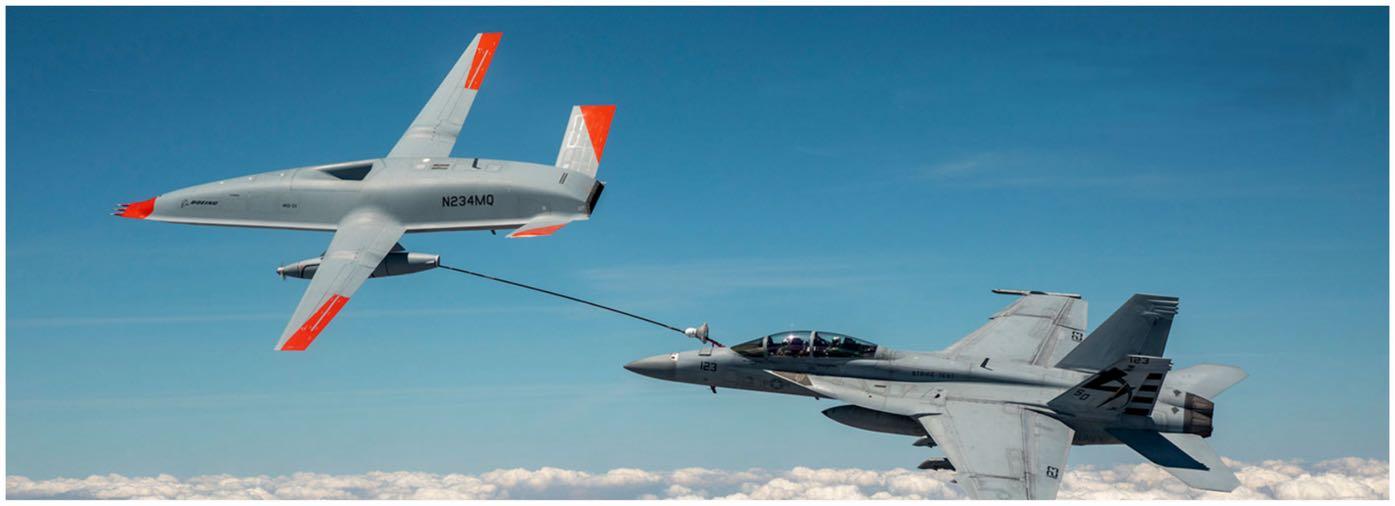
The next breakthrough is Unmanned Vehicle refuelling. In the main image here, Boeing’s MQ-25 “Stingray” is being positioned on the deck of USN George W. Bush (CVN77) for trials. The aircraft’s first flight occurred in September 2019, followed by actual refuelling and Flight Deck trials in 2021.
Interestingly, the Stingray was fitted with a Cobham aerial refuelling store when it completed its first flight.
The Stingray’s build specification required that it carry 15,000 lb of fuel and deliver it to four to six aircraft at a range of 500 nm. The current order is for seven of the UAVs, although this number may increase to 72 for a total cost of US$13bn.
Future expansion of the role will include the ability to refuel other UAVs - a capability on which the US is placing great importance, noting the increasing role of drones in modern warfare. (USN images).✈
38 39 Feature Article
2020+
Yesterday...


Apart from the cluster of Holden taxis and the remarkable old buildings of the period the shot shows (centre screen just near the Penfolds sign) the location of the ‘Hasty Tasty’ café, a popular place for navy personnel late into the night after the pubs closed, where hamburgers and coffee were available before a stroll back to Garden Island. In the late 1950s and early 60s Kings Cross was slightly bohemian as some places served expresso coffee and Wiener schnitzel otherwise it was fairly subdued. A few years after this photo was taken things moved on as Abe Safron opened the Pink Pussycat girly show upstairs near the Hasty Tasty and later the giant-sized Coca Cola sign was fixed to the top of the tall building next door. Things hotted-up a bit following influx of US servicemen on R&R during the Vietnam War.
Some of the old crowd would remember this. Kim Dunstan. ✈
FAAAA ANNUAL SUBSCRIPTIONS ARE NOW WELL OVERDUE. PLEASE SUPPORT US BY PAYING
FinalNotice
Payment varies depending on which Division you are in - please see details below. You can pay by Electronic Fund Transfer (EFT), by direct deposit at your local bank, or by sending a cheque. Sorry we don’t do Credit Cards.
If you need any advice or assistance, please contact the webmaster here.
NSW DIVISION
Amount: $40.00 pa, regardless of Slipstream format.
Account Name: FAAAA
BSB: 637 000
Account: 7168 19 388
Reference: Membership Number or your
surname+initial
Cheques: The Treasurer FAAAA NSW Division, PO Box 28, NOWRA 2541. Ensure you put your full name on the back!
ACT DIVISION
Amount: $36.00 pa if you receive ‘hard copy’ Slipstream. $24.00 pa if you receive Electronic Slipstream.
Account Name: FAAAA
BSB: 032 719
Account: 374 093.
Reference: Membership Number or your surname+initial
Cheques: The President FAAAA Act Division, 51 Enid Lorrimer Cct, CHISHOLM 2905. Ensure you put your full name on the back!
SA DIVISION
Amount: $49.00 pa if you receive ‘hard copy’ Slipstream. $37.00 pa if you receive Electronic Slipstream.
Account Name: FAAAA
BSB: 065 118
Account: 009 05 668.
Reference: Membership Number or your
surname+initial
Cheques: The Treasurer FAAAA SA Division, 6 Somerset Avenue, CUMBERLAND PARK, SA 5041. Ensure you put your full name on the back!
VIC DIVISION
Amount: $45.00 pa regardless of Slipstream format. (Associate Members - $10.00)
Account Name: FAAAA
BSB: 083 961
Account: 3108 23 774.
Reference: Membership Number or your surname+initial
Cheques: The Treasurer FAAAA VIC Division, PO Box 2179 RMH Post Office, PARKVILLE 3050. Ensure you put your full name on the back!
WA DIVISION has declined to publish its payment details. If you have any queries please contact the Secretary, Jim Bush.
42 43
43
Yesterday...











































































 Compiled by Marcus Peake
Compiled by Marcus Peake

























